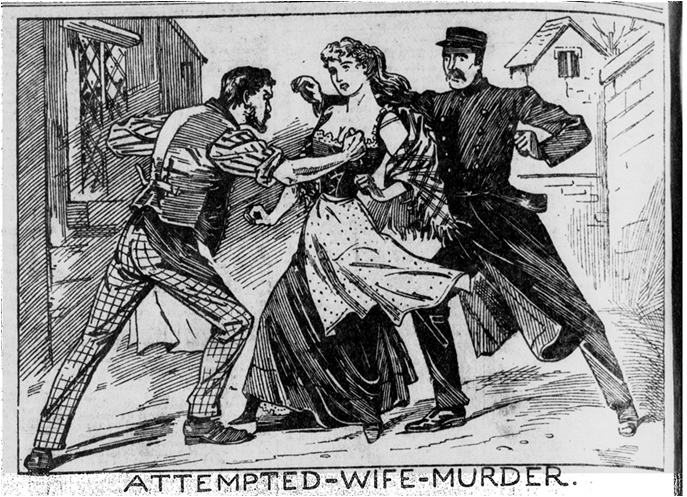
Throughout the history of crime the roles of ‘fences’ (receivers of stolen goods), pawnbrokers, and those involved in the second hand clothes market, are frequently cited by commentators as problematic. Put simply, if thieves didn’t have somewhere to easily dispose of their ill-gotten goods then they might not steal in the first place.
This was certainly the underlying theme in the Morning Post’s report of a theft hearing at the Worship Police court in late December 1870. Elizabeth Brown (aged 22), Charlotte Quigly (20) and her 45 year-old mother, also called Charlotte, were presented before Mr Bushby accused of stealing and selling a quantity of buttons from the younger Quigly’s employer.
Mr Williamson, a wholesale manufacturer of buttons based in Hackney, East London, had noticed that his stock was going missing. Having been unable to pinpoint where the theft was occurring he called in the police. Detective Chapman of W Division (which was the Clapham force) soon discovered that a large quantity (‘several gross’) of buttons had been sold to traders in Bethnal Green, Shoreditch, Hoxton, and Hackney by younger Charlotte Quigly’s sister. This gave him a clear link to the source of the depredations.
He pursued this line of inquiry and found out that Charlotte and Elizabeth Brown had both sold parcels of buttons to shopkeepers in Bethnal Green Road. Armed with this evidence he arrested and questioned the two young women. Brown had left Williamson’s employment a year earlier and quickly admitted her crime; she had been driven to it by poverty she declared, and threw herself on the mercy of the detective.
With the two younger women in custody Chapman continued his investigation and soon arrested Mrs Quigly, charging her with selling some of the buttons in the full knowledge that they were stolen. Why her younger daughter was not arrested is not clear, but perhaps she was considered to have been acting on instructions from her mother or older sister, or there was simply insufficient evidence against her. Whatever the truth the three women appeared in the dock at Worship on the 29th having been remanded for the theft a few days earlier.
The remand gave time for Willaimson’s solicitor to bring a motely collection of shopkeepers to court as witnesses. Isaac Levine (of 17 Bethnal Green Road) and tailor, and Mr Hyams of Brushfield Street, Hoxton (a tailors’ trimming seller), plus another half-dozen traders were called to confirm the detective’s evidence.
Examined by Mr Beard (the prosecuting solicitor) they said they had been offered the goods as ‘job lots’, as damaged or faulty, or some other story to explain why the buttons were available so cheaply. Few of them had asked any questions, or sent the women away, let alone pass on any suspicions to the police. Moreover, none of them wrote down their purchases in their account books. Clearly they must have known that the stock they were buying was ‘dodgy’ at best, but chose to do nothing and profit from it regardless.
Mr Bushby was suitably appalled at their behavior, and said so.
‘[T]he system they pursued was eminently calculated to foster crime like this’ he thundered, and ‘he fervently hoped the time would come when they and such as they would be looked after by the police’.
‘The were as much answerable for the crime of the prisoners as the prisoners themselves’, he added, and told them he was astounded that they had the nerve to come to his court and swear that they had believed these goods were merely ‘damaged’ and not – as they clearly were – stolen. In future they had better start recording all purchases in their logs books or they would find themselves in the dock as receivers.
Having finished his tirade he granted the police a further remand to continue to gather evidence against the three defendants. Sadly, this is where their trail goes cold. None of them appear in the papers after that and I can see no jury trial either. I suspect they were either summarily punished or that Charlotte Quigly (the younger) was simply dismissed from Mr Williamson’s employ.
Here then was one Christmas season story involving buttons that didn’t have a happy ending.
[from The Morning Post Thursday 29 December 1870]







